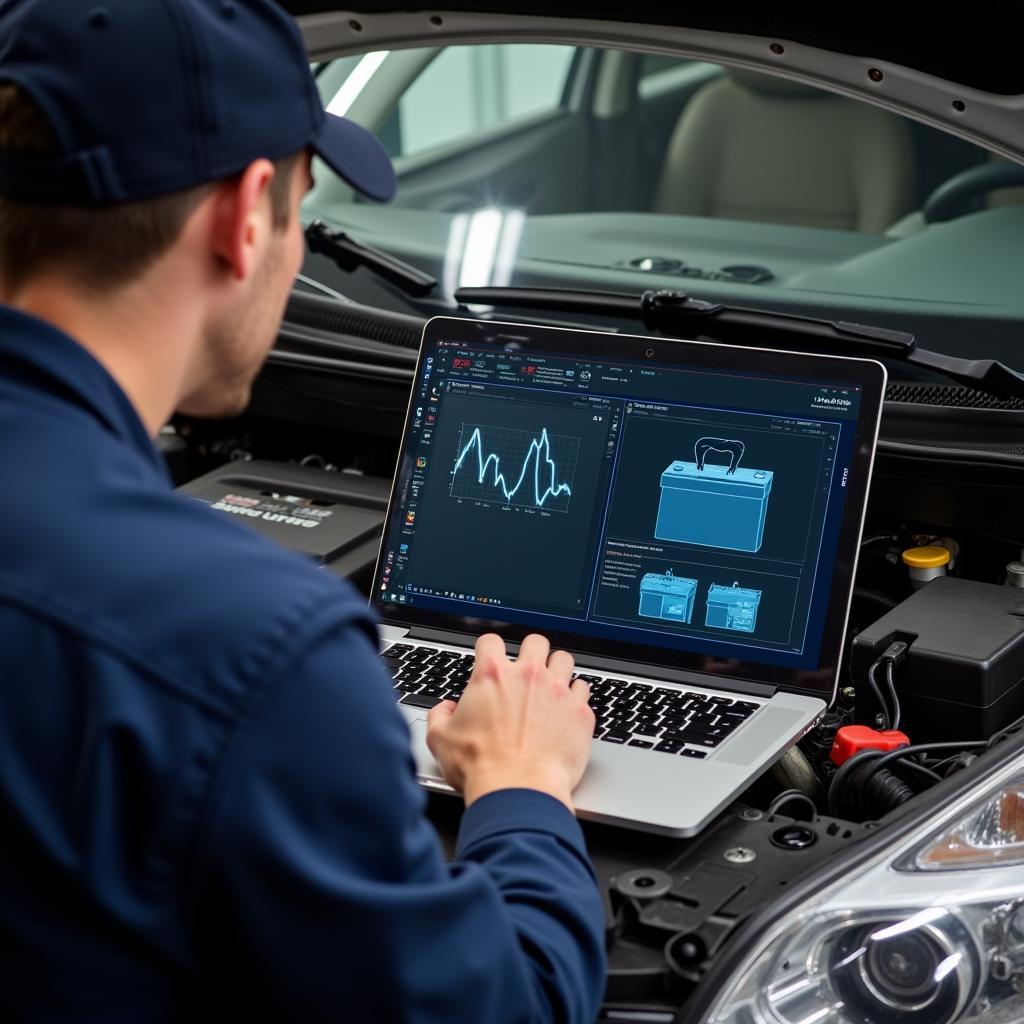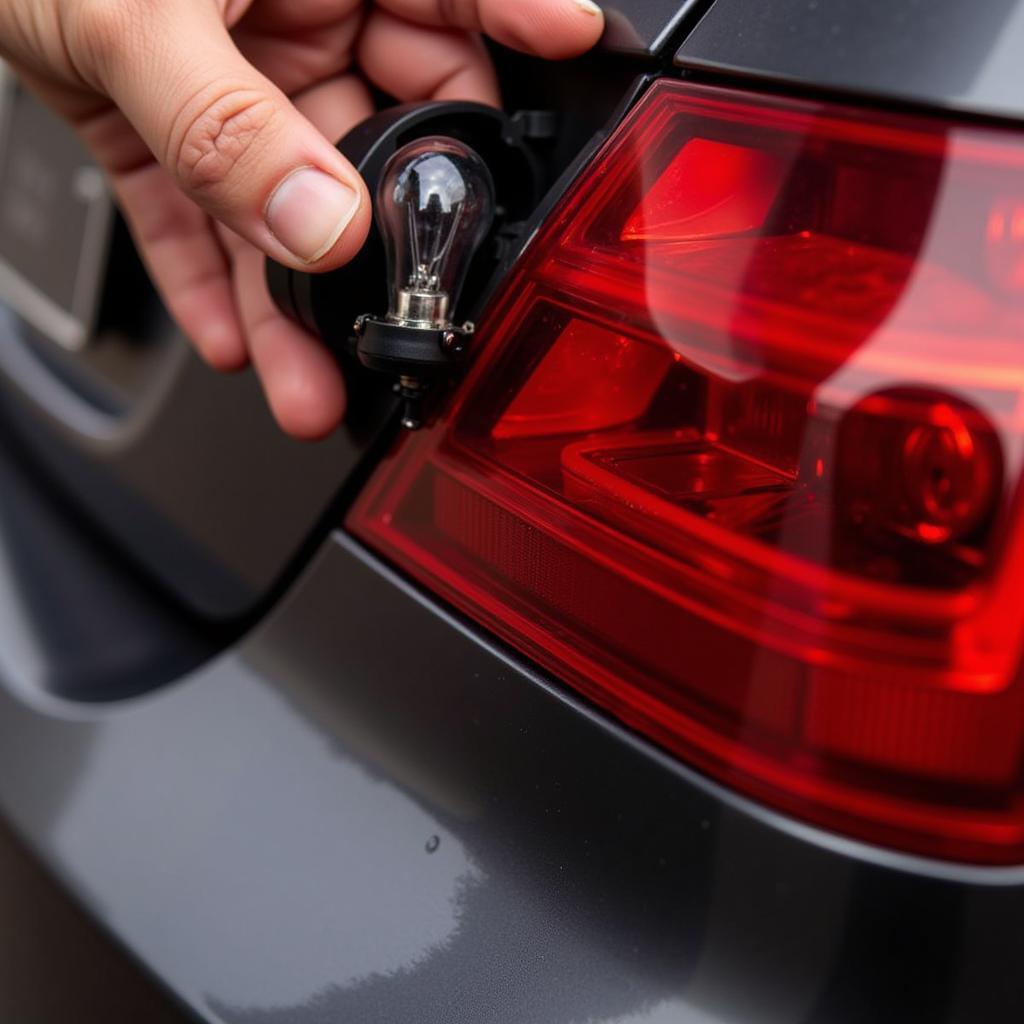A dead car battery is a frustratingly common problem. Whether you’re rushing to work or heading out for a weekend trip, a dead battery can bring your plans to a screeching halt. This article will guide you through the common causes of a dead battery, provide troubleshooting steps, and explore the possibilities of remote diagnostics, programming, and software installation to get you back on the road quickly.
Why Does My Battery Go Dead?
Several factors can contribute to a dead battery. Understanding these causes is the first step towards finding a solution.
- Parasitic Drain: Even when your car is off, certain components like the clock, radio memory, and security system continue to draw power. A malfunctioning component or a forgotten interior light can drain your battery overnight.
- Old Age: Like any other component, car batteries have a limited lifespan. Typically, a battery lasts between three to five years. Extreme temperatures can shorten this lifespan.
- Alternator Issues: The alternator recharges the battery while the engine is running. A faulty alternator won’t charge the battery properly, eventually leading to a dead battery.
- Extreme Temperatures: Both extreme heat and cold can affect battery performance. Heat can evaporate the battery fluid, while cold can slow down the chemical reactions needed to produce power.
- Corroded Terminals: Corrosion on the battery terminals can prevent the battery from properly connecting to the electrical system, leading to starting problems and eventual battery failure.
Troubleshooting a Dead Battery
Before you jump to conclusions, follow these steps to diagnose the problem:
- Check the Obvious: Ensure the headlights, interior lights, and any other electrical accessories are turned off. Sometimes the simplest solution is the right one.
- Jump Start: Try jump-starting your car. If it starts, this indicates a problem with the battery or the charging system.
- Inspect the Terminals: Examine the battery terminals for corrosion. Clean them with a wire brush and baking soda solution if necessary.
- Test the Battery Voltage: Use a multimeter to test the battery voltage. A fully charged battery should read around 12.6 volts.
Remote Diagnostics and Solutions
In the digital age, remote diagnostics and programming are becoming increasingly popular for resolving car issues.
What is Remote Diagnostics?
Remote diagnostics allows technicians to access your vehicle’s computer system remotely and identify the root cause of the problem. This can save you valuable time and money compared to traditional diagnostic methods. For instance, a remote technician can identify a faulty alternator or a parasitic drain without you having to bring your car to a shop.
How Can Remote Programming Fix My Dead Battery Issue?
In some cases, a software update or reprogramming might be necessary to resolve battery-related issues. This is especially true for newer vehicles with complex electrical systems. Remote programming allows technicians to install these updates wirelessly, eliminating the need for a physical visit.
What if my battery keeps dying overnight? A remote diagnostic can pinpoint the culprit, which could be a faulty door switch causing a parasitic drain. Remote programming could then address any underlying software issues impacting battery performance.
 Mechanic Performing Remote Diagnostics on Car Battery
Mechanic Performing Remote Diagnostics on Car Battery
Conclusion
A dead battery doesn’t have to be a major inconvenience. By understanding the causes, employing basic troubleshooting techniques, and exploring remote diagnostic and programming options, you can quickly resolve the issue and get back on the road. Don’t let a dead battery ruin your day.
FAQ
- How often should I replace my car battery? Generally, car batteries last 3-5 years.
- Can I drive with a bad alternator? You can drive for a short distance, but eventually, the battery will drain completely.
- Is it safe to jump-start my car? Yes, as long as you follow the correct procedure.
- What are the signs of a dying battery? Slow engine cranking, dim headlights, and clicking sounds when starting are common signs.
- How can I prevent my battery from going dead? Regularly check the battery terminals for corrosion, limit short trips, and avoid leaving electrical accessories on when the engine is off.
- What are the benefits of remote diagnostics? Convenience, speed, and potentially lower costs compared to traditional methods.
- Can remote programming fix all car battery problems? No, physical damage or component failure might require physical repairs.


